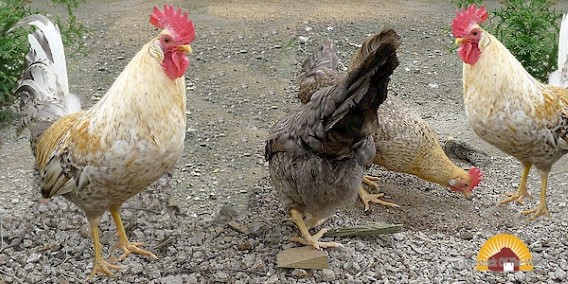Norwegian Jaerhones are auto-sexing chickens developed in the 1920s from local breeds in the Jæren district of Norway.
Jaerhones were the principal chicken breed of Norway until imports of foreign breeds began in the nineteenth century. They were selectively bred at the state-controlled breeding station at Bryne in Jaeren from its establishment in 1916 until it closed in 1973. Breeding stock were then transferred to the state agricultural college at Hvam, Nes.
They come in two color varieties: dark brown and yellow, and light brown and yellow. They have a single comb and their beak and legs are bright yellow.
A miniature version with the same two color varieties was approved in 1994.
Jaerhones hens lay approximately 215 eggs per year, about 20% less than industrial
purpose-bred layers. Their eggs are white, and weigh a minimum of 55 g. Jaerhones were
listed as a "conservation-worthy national breed" by the Norwegian
Forest and Landscape Institute in its 2008–2010 action plan for the
conservation and sustainable use of animal genetic resources in Norway.
